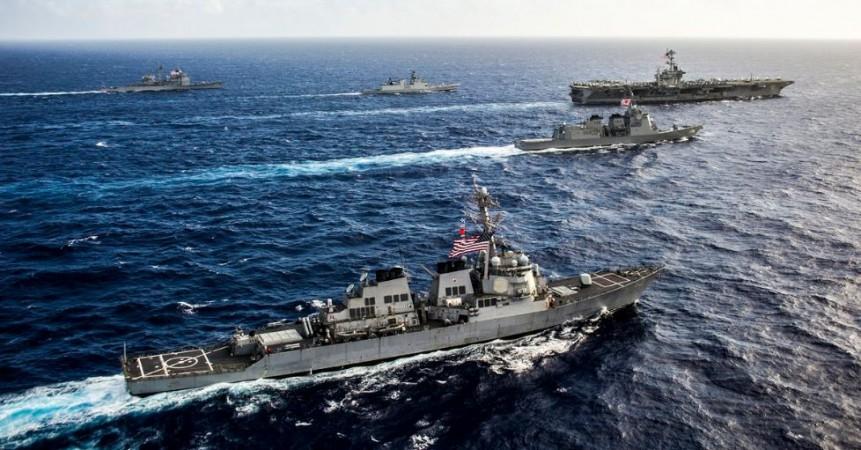
The vessels of the Indian Navy have reached the Sasebo harbour near Nagasaki in preparation of the upcoming Malabar 2016, a trilateral exercise involving the navies of India, Japan and the U.S.
The twentieth edition of the Malabar exercises are expected to take place off the Okinawa coast near Japan. It would be held from June 14 to 17.
The exercise would include "harbour phase" at Sasebo, followed by "sea phase," where the navies will perform "complex surface, sub-surface and air operations," according to a press release.
These exercises are said to help augment "interoperability amongst the three navies and develop common understanding of procedures for Maritime Security Operations."
Though the official statement from the Indian Defence Ministry says that these naval exercises are to help augment "interoperability amongst the three navies and develop common understanding of procedures for Maritime Security Operations," it sends a clear message to the Chinese to resolve its territorial disputes peacefully and not to challenge the freedom of navigation near the disputed territories that China claims in the East China sea and beyond, IANS reported.
China has become assertive with its stance in the South and East China Seas and its military growth has alarmed all the three countries. These drills are taking place close to the contested islands of Senkaku or Diaoyu.
These naval exercises have been described by an envoy in the U.S. embassy in New Delhi as "high-end warfighting exercises." It features guided missile stealth frigates INS Satpura and INS Sahyadri, guided missile corvette, INS Kirch, and fleet support ship, INS Shakti.
Japanese Maritime Self Defence Forces are fielding JS Hyuga, a helicopter carrier with SH 60 K integral helicopters, Long Range Maritime Patrol aircraft and US-2 amphibious rescue aircraft.
The U.S. Navy is represented by the aircraft carrier USS John C Stennis, Ticonderoga class Cruiser USS Mobile Bay and Arleigh Burke class destroyers USS Stockdale and USS Chung Hoon. Apart from this it will also feature one nuclear powered submarine, carrier wing aircraft and Long Range Maritime Patrol aircraft.
"The exercises demonstrate greater boldness on the part of all three countries in challenging China's growing assertiveness in the maritime domain while demonstrating their commitment to protecting the freedom of navigation in the region," Chietigj Bajpaee, a military expert at King's College in London, told DW.














